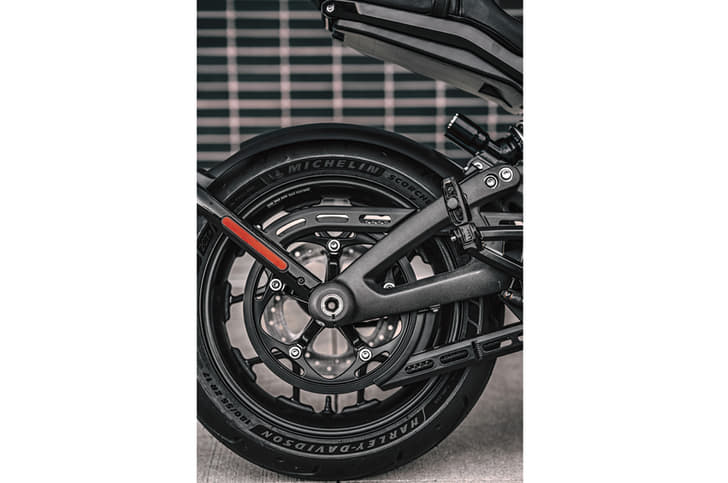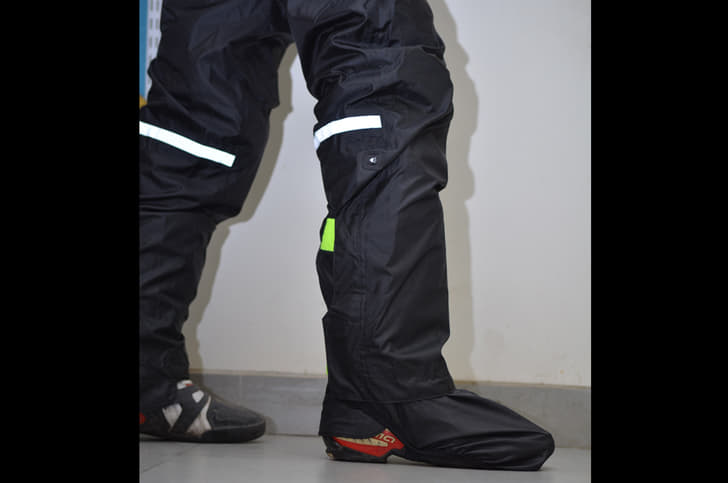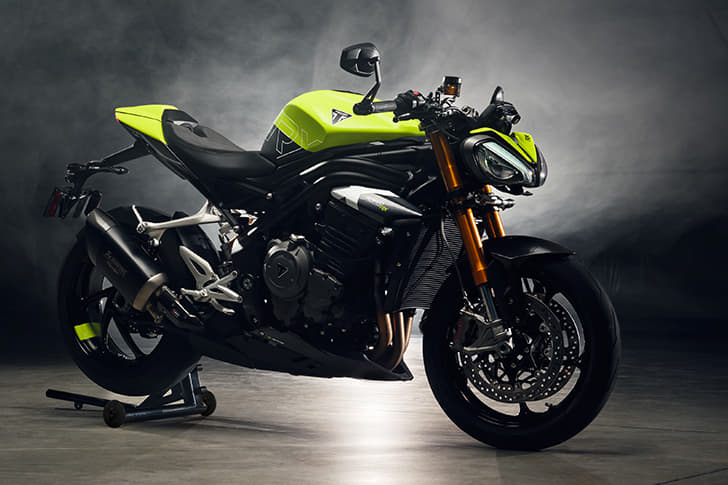There are a few things I know about Alex, the Harley-Davidson lead rider just in front of me. I know that, with all his club racing experience, he’s a much faster rider than I am. I’m also aware that the Street Glide Special he’s riding packs nearly 50 Newton metres more torque than the fascinating motorcycle I’m on. And yet, on this winding road, I know I can leave him for dead on any corner exit. Given the chance, I’ll be gone in a matter of seconds while he’s busy scraping the life out of a giant Harley that really shouldn’t be carrying this kind of pace in the first place. But I’m a reasonably well-behaved chap and Alex stayed in the lead all day, which gave me plenty of time to process what is easily the most radical machine Harley has built in all of its 116 years of existence.
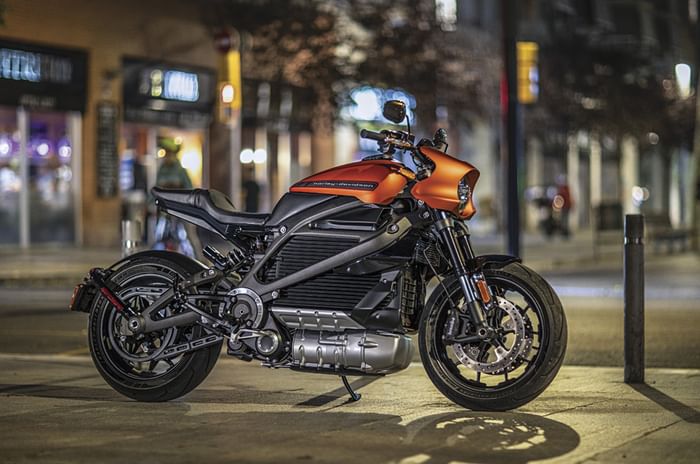
Why does it exist?
Harley is in a bit of a ‘try or die’ situation. The existential model that has served them so well for the last century is slowly but surely fading into irrelevance as its fiercely loyal core group of customers ages. The LiveWire, and the future it represents, is essentially Harley-Davidson throwing the revered family recipe book into the fireplace and building a fresh establishment from scratch. Thankfully, brand loyalists can be rest assured that internal combustion is still very much part of the agenda, at least for the foreseeable future. But when Harley states that they want to be leaders in the electrified premium and sports space, you know they’re not fooling around. The LiveWire is a show of intent – that’s why it exists.
Things kick off well because this bike looks the part. The design is fresh and decidedly sporty, but also quite identifiable as a Harley-Davidson. The LiveWire’s streetfighter approach to styling reminds of the old Buell motorcycles, and its finish levels are excellent too. The massive battery pack and the motor that resides beneath it make for the focal point of the design and the fins running along the aluminium casing of the battery pack are in line with Harley’s air-cooled heritage. The designers have done a tremendous job of keeping it neat and you won’t find any stray cables or hoses in sight. At first glance, you won’t even notice that the electric motor is liquid-cooled because the plumbing and radiator setup are all cleverly hidden away.
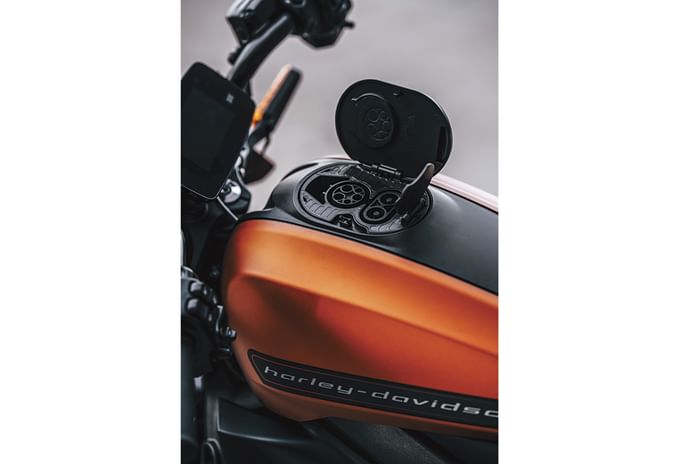
The decision to stick with a fuel tank, despite the fact that it now has no purpose, keeps things familiar in terms of design, and the charging port is hidden away at the top of this false fuel tank. The only colour you will see is in the fuel tank panels and on the cowl that surrounds the full-LED headlamp. The minimalism continues at the rear where all the lighting is mounted on the substantial tyre hugger, leaving for a clean seat unit that looks worryingly compact, but actually accompanies a 6ft-tall rider quite well.
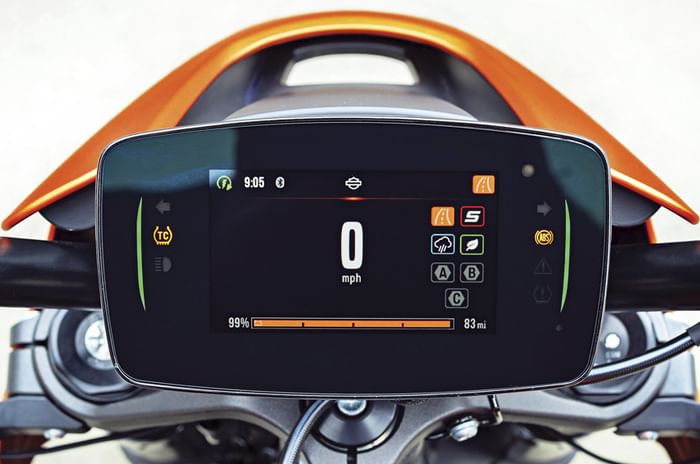
There is no wind protection, but the rider does get to glance down at a full-colour touchscreen display, which works quite well, even with gloves on. As with most premium EVs, the LiveWire also packs a bunch of smart and connected features, thanks to a 4G SIM that comes preinstalled.
The first roll out
If you’ve ever experienced an EV, one of the stranger aspects is not knowing whether the motor is ‘on’ or not until you open the accelerator to find out. The LiveWire has an interesting feature where the motor produces a subtle haptic pulse, along the lines of a heartbeat, when the vehicle is on, but at a standstill. It’s interesting, but I never quite got comfortable with it because it kept fooling me into whipping my head backward, thinking that some idiot had gently bumped into the rear tyre – what a uniquely Indian problem to have.
The liquid-cooled motor produces 105hp and 116Nm of torque, all available from pretty much the get go. I elected to start the day in the most restricted of riding modes, aptly named Range mode. Response at the accelerator is smooth and lazy and the LiveWire moves forward cleanly, with a subdued, but clear whine from the motor. There are no gears or clutch to be bothered with and you simply ride the bike like you would a scooter; twist and go. Range mode quickly grew boring, with performance levels on par with a typical sporty commuter, or a quick electric scooter. Switching over to Road mode made things much more interesting, but it wasn’t until we broke free from urban Portland that the fun really began.
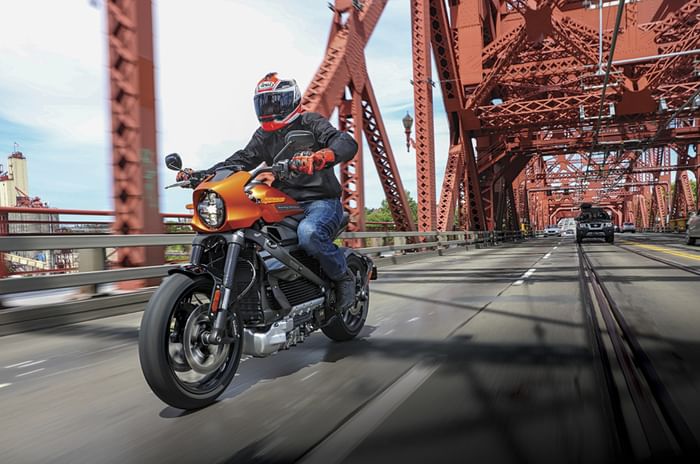
Flash forward
You won’t quickly forget the first time you accelerate hard on a powerful electric bike. The whine gets louder and more urgent, and the scenery gets a little more blurry as the bike shoots forward in a strange and unsettling marriage of calmness and ferocity. The surge is completely linear and with absolutely no let off, even when you’re well past 100kph. On the LiveWire, the rush begins to ease at about an indicated 80mph (128kph), but the bike is still pulling when it shows an indicated speed of 110mph (177kph), where the speed limiter ends the party.
It takes a major mental recalibration for your riding to start becoming instinctive again. My left limbs kept pawing at the air in search of a clutch and gearbox at corner entries, and I began to rely on trailing the rear brake for a sense of confidence. But with time, you realise that the adjustable regen-braking does the job just as well, and if it’s set on the higher side, a slight roll off the throttle in mid-corner helps to neatly trim speed.
The LiveWire really likes corners, and a lot of that is down to its unique new chassis. This clever modular aluminium setup isn’t welded, but bolts together instead, with the headstock being a separate unit – this will make it easier to spawn different models down the road. The chassis feels sport-bike firm, and the suspension has that typical, Harley-style stiff and over-damped feel. Both, the USD fork and centrally mounted monoshock are high-end Showa units that are fully adjustable, so you should be able to find some more comfort. Speaking of which, the riding position is far from your typical laid-back Harley. This one is like a sport naked, with some lean down to a wide handlebar and fairly rear-set foot pegs – committed, but not painful.
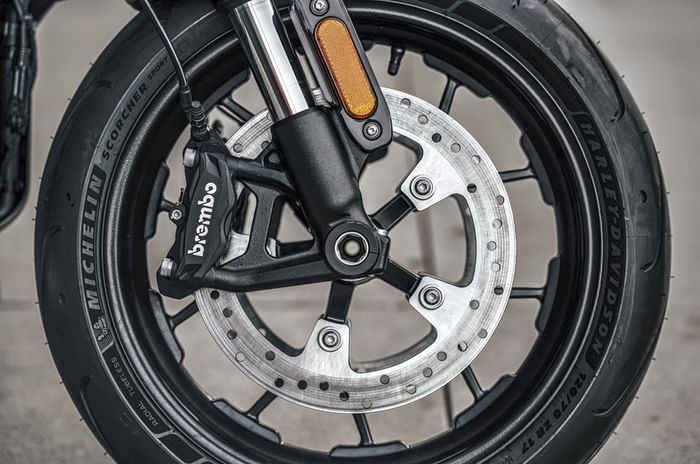
A kerb weight of 249kg on the spec sheet is quite a lot, but it’s still on the lighter side in Harley’s line up, and about on a par with the Iron 883. The feeling of relative lightness translates to the road, especially with the sports bike-like ergonomics and aggressive 24.5-degree steering rake angle. For someone used to a Harley, the speed with which the bike turns in can be alarming; it becomes immediately clear that the LiveWire handles like a big sport naked. All the weight is managed well, and it feels much easier on its feet than a similarly heavy petrol-engined Harley. There’s 45 degrees of cornering clearance available, which is more than a Ducati Diavel, and the specially developed Michelin Scorcher tyres are sticky friends in your quest to lean more and more. Meanwhile, IMU-aided traction control and cornering ABS provide the highest levels of electronic safety ever seen on a Harley.
The practicality quotient
While the performance is stunning, the range from the 15.5kWh battery is just about okay. Harley claims a range of 235km in the city, or about 152km of combined city and highway riding. On our ride, we covered just under 110km, with most of it being aggressive riding, and the display told me I still had about 23 percent charge left, so Harley’s claims seem realistic. Charging from home will take a massive 12.5 hours with a standard charger, but if you find a compatible public access quick-charger, the same process takes just one hour. Harley already has 240 authorised dealers across North America and Europe, all of them equipped with fast chargers. Plans for markets outside that zone, including our own, are still being decided.
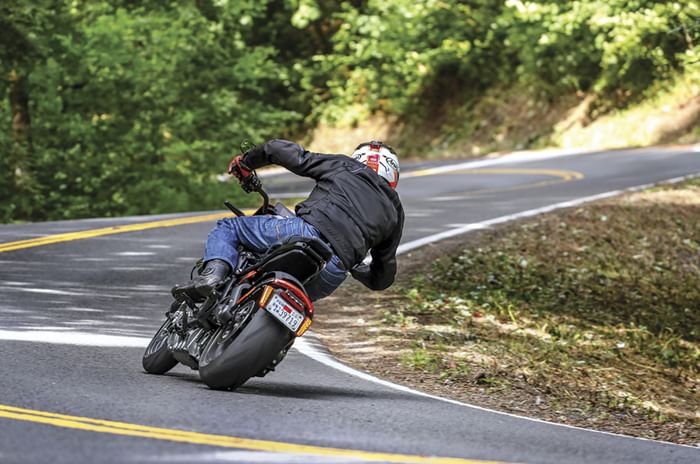
What has been decided is the price, and at just under $30,000 in the USA, it’s seriously expensive and only the range-topping CVO models cost more. When it eventually comes to India, it could cost anywhere between Rs 32-35 lakh, based on what kind of government benefits apply. Harley has no immediate plans to bring the LiveWire here and will only do so when we have some form of supporting infrastructure; I suspect we’re looking at, at least, a year or two.
But this is just the start of the brand’s electric journey and it’s intended to be positioned as a halo product. While Harley clearly says they will continue to make petrol-powered motorcycles, EVs will also be a priority and there are more affordable options coming in the future. For now, the LiveWire presents a fascinating taste of what’s to come.



